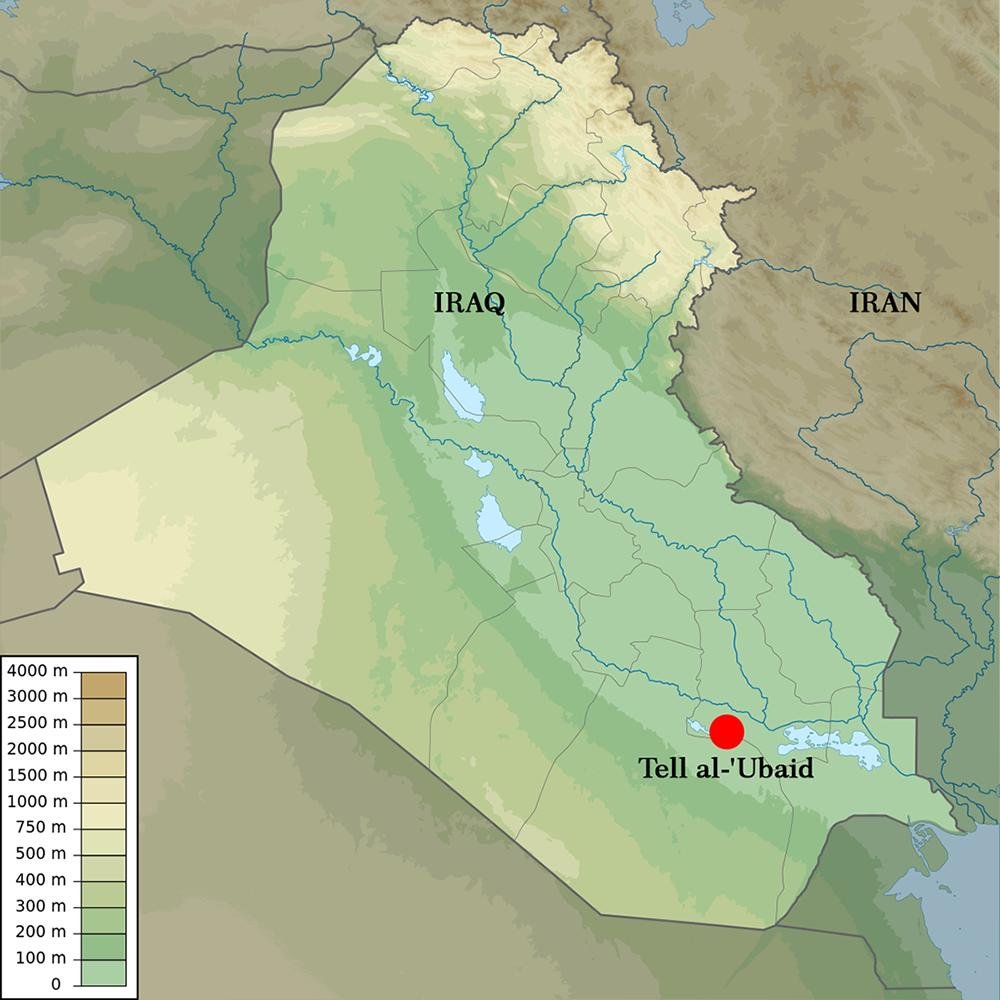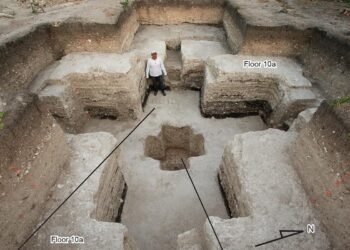The Ubaid period, spanning from approximately 5900 to 4000 BCE, marks a significant phase in the history of Mesopotamia. Named after the site of Tell al-‘Ubaid, where the first evidence of this culture was discovered, the Ubaid period is characterized by the emergence of complex societies and the development of urban centers in the region.

The Ubaid period is situated between the earlier Neolithic era and the subsequent Uruk period, both of which played crucial roles in shaping the civilization of Mesopotamia. During this time, agriculture became more established, leading to a surplus of food and the subsequent growth of settlements. This shift from a nomadic lifestyle to a sedentary one laid the foundation for the development of urban centers and the rise of civilization.
Social Structure and Economy
The Ubaid society was hierarchical, with a clear distinction between the ruling elite and the common people. The ruling class consisted of priests, administrators, and other individuals who held positions of power. They oversaw the organization of labor, trade, and religious rituals. The common people, on the other hand, were primarily engaged in agricultural activities, such as farming, herding, and fishing.

Trade played a significant role in the Ubaid economy. Mesopotamia’s geographical location, between the Tigris and Euphrates rivers, allowed for easy access to both the Persian Gulf and the surrounding regions. This facilitated the exchange of goods, such as textiles, pottery, and precious metals, with neighboring cultures, including those in the Indus Valley and the Arabian Peninsula.
Technological and Cultural Advancements
The Ubaid period witnessed several technological advancements that contributed to the growth of Mesopotamian civilization. The development of irrigation systems allowed for more efficient agricultural practices, leading to increased food production. This, in turn, supported larger populations and the establishment of urban centers.
Art and craftsmanship flourished during this period. Ubaid pottery, characterized by intricate designs and vibrant colors, showcases the artistic skills of the era. Additionally, the construction of monumental buildings, such as temples and palaces, demonstrates the architectural achievements of the Ubaid people.

Religion and Beliefs
Religion played a central role in Ubaid society. The people worshipped a pantheon of gods and goddesses, with each city having its own patron deity. Temples were built as sacred spaces for religious rituals and offerings. The priests, as intermediaries between the divine and the mortal realms, held significant influence within the community.
The Ubaid period also marks the beginning of the belief in an afterlife. Burial sites from this era reveal that the deceased were buried with personal belongings, suggesting a belief in an afterlife and the importance of preparing for it.

The Ubaid period laid the groundwork for the subsequent civilizations that emerged in Mesopotamia. The advancements in agriculture, trade, and social organization during this time set the stage for the rise of the Sumerian civilization during the Uruk period.

Furthermore, the cultural and artistic achievements of the Ubaid people influenced later Mesopotamian societies. The intricate pottery designs, architectural styles, and religious practices established during this period continued to evolve and shape the region’s cultural landscape for centuries to come.






















Comments 0